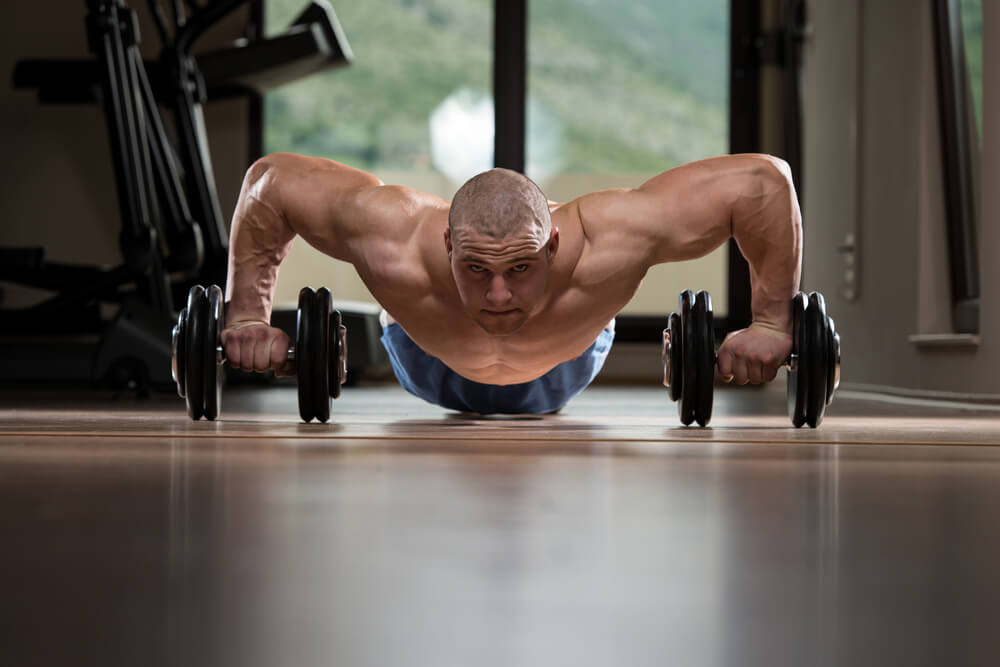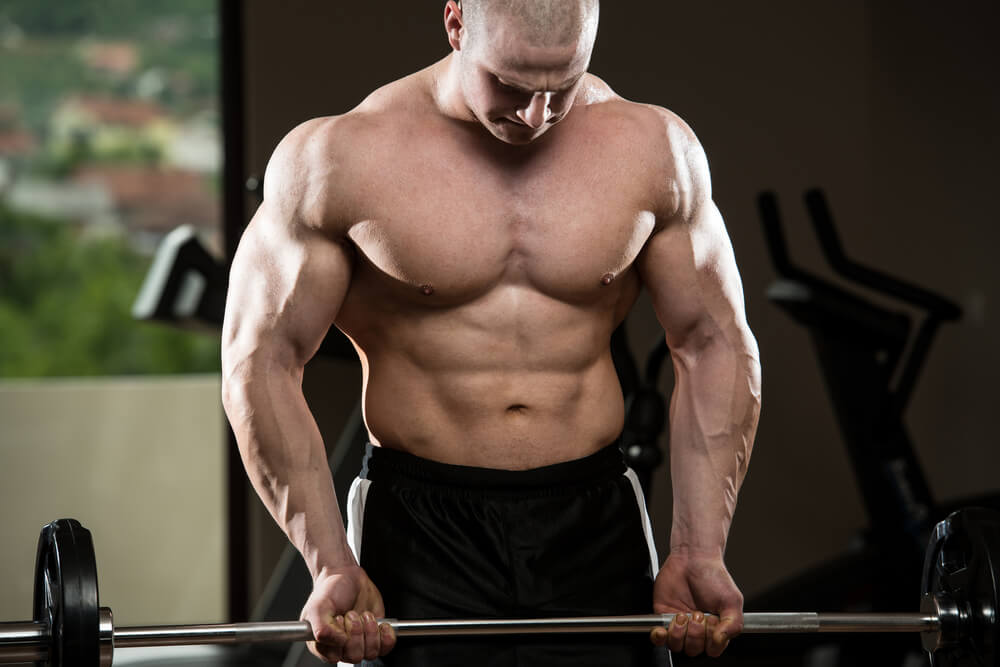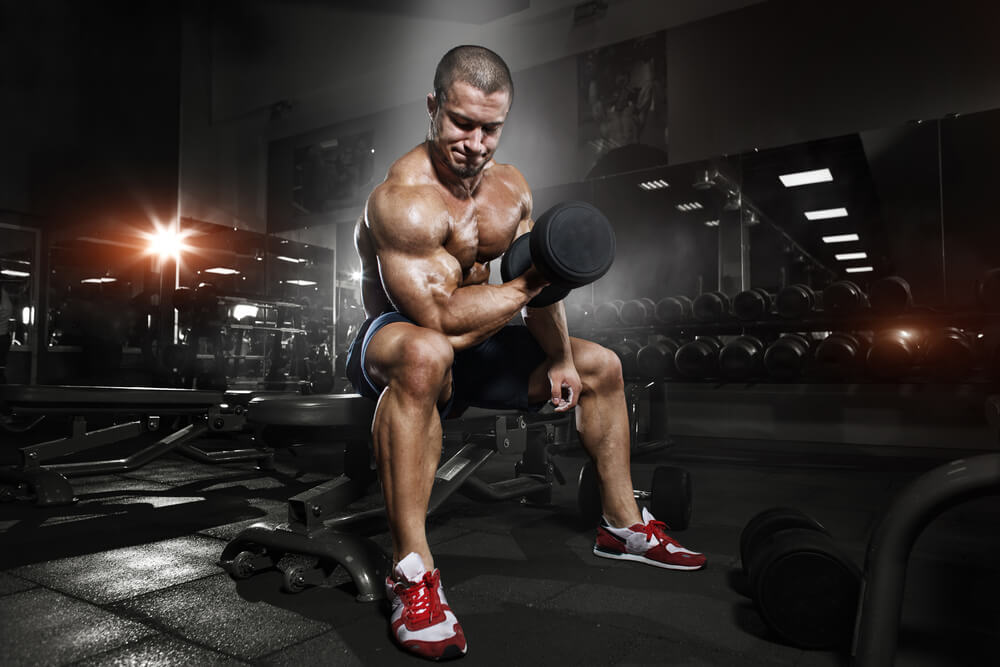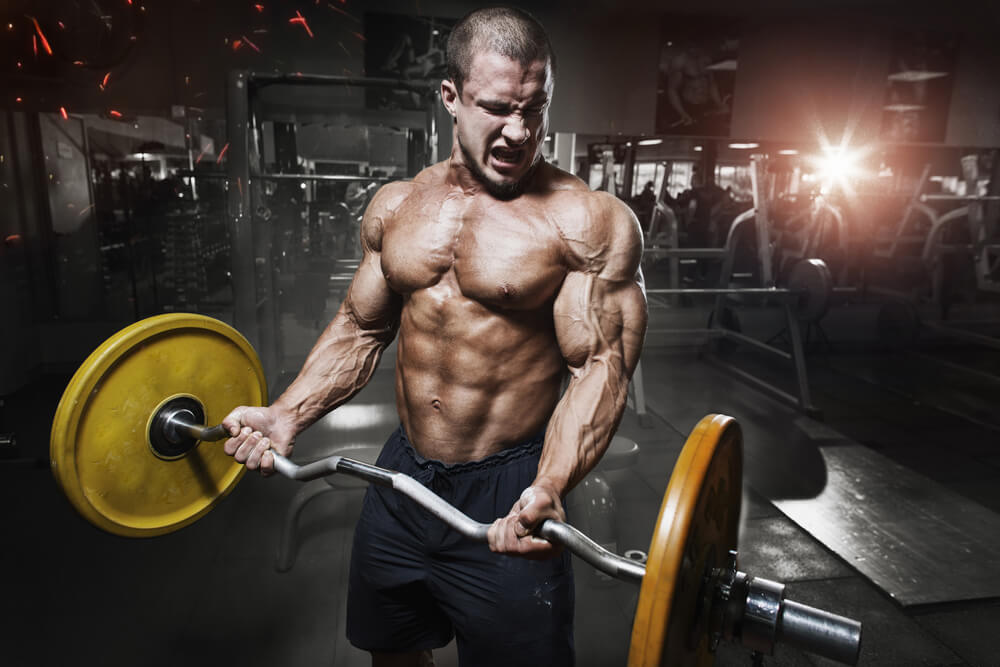
Secret tips to the Best Way To Build Muscle and get your dream body. Here are the select few that work that you need to know!
If you’re reading this, chances are you know that lifting weights is the easiest way to build muscle. What you might not know is that the way you lift those weights and the way you vary your workout routines will ultimately define how much muscle you gain.
The following tips are not meant to replace your current workout. They’re meant to enhance it with some muscle building thoughts and tricks you may have forgotten about or never heard of. Even if you only include one of these tips into your daily gym routine, you’ll be on a path to bigger and better muscle.
Best Way To Build Muscle Top 10 Countdown…

#1 Do Compounds First
After you’ve warmed up, start with your most complicated lifts. These should mainly consist of compound movements such as bench workout, deadlifts, and squats. These moves require the greatest amount of muscles to work together. That’s why doing them first will ensure that none of your primary or secondary muscles are fatigued for the lift.
For example, if you do lat pull downs and triceps extensions before bench pressing, your secondary muscles will be burned out and your bench press will suffer. Sure, you won’t have worked out your pecs and you may think that that’s the only muscle group that matters for bench pressing, but for compound movements, you need more than just your primary muscle group to be rested for the lift.
If you go to the gym at peak times this is obviously easier said than done, as compound lifting stations are by and large the most crowded. While this may tempt you to begin with isolation exercises to maximize your gym time, it will prove beneficial if you stay patient. Wait to do your compound lifts first so that you can maximize your muscle growth.

#2 Watch Your Reps!
There are two schools of thought on how you can use your rep count to maximize your muscle gains. The first, and most traditional, is to lower your rep count and increase the amount of weight you’re lifting. This will help prevent the fatigue you may get from a 10 rep set and will let you lift more weight.
Many people ask how many reps for mass?
Doing fewer reps per set allows you to use more power. This will ultimately help you build more strength. If you insist on keeping your total reps the same, you can always just switch your reps and sets so that 4 sets of 8 reps becomes 8 sets of 4 reps.
The other school of thought is to increase your reps while decreasing your weight. This will let you focus on your form. Form can be a large driver on how to gain muscle mass. Being able to truly master your form will not only let you do the exercise correctly, but it will help you avoid injury and boost your ability to lift heavy when you need to because the movement will be flawlessly ingrained in your muscle memory.

#3 Small Changes Equal Big Results
If you’re happy with your workout plan right now and are seeing results, you likely shouldn’t make any major changes. But, you can make small changes to your current exercises and get big results.
It might not seem like much, but simply changing your grip on the bar in a number of exercises can help you see different results. For example, moving your grip from close to wide for barbell curls will let you work different parts of the biceps and really let your head pop for your arms workout. Another example is closing your grip when you bench press. This will really work your triceps.
It is vital to be careful with the weight you use when switching your grip, as the exercises can work your muscles in totally new ways. To be safe, start with a lower weight than you’re used to so that you can avoid injury.
It’s also a good idea to take it slow when changing your grip. That allows you to focus on your form and see how the new grip changes the rhythm of the movement that you’re used to. This small and simple change can be a great addition to your workouts, as well as a way to vary your current routine without a drastic overhaul of your workout.

#4 Try Pyramiding
Pyramid training is great.
Why?
It lets you get in a lot of reps and sets across a large weight range. You’ll want to take a low weight and a high rep range and then progress towards a high weight and low rep range, essentially creating a pyramid effect of weights and reps.
Here’s an example of a pyramid for squats:
15 reps – 135 pounds
12 reps – 155 pounds
9 reps – 175 pounds
6 reps – 205 pounds
3 reps – 225 pounds
1 rep – 250 pounds
Clearly, you’ll need to employ weight limits that will work for you. If you’re worried about fatigue at the end for your highest weight, you can always do an inverse pyramid. That’s where you start with low reps and high weight.
However you want to approach the pyramid, it’ll be a surefire way to get your muscles fatigued and break them down, which will help promote fast muscle growth. This works great with both compound and isolation exercises. Be wary of using it for every exercise.
Why?
Fatigue will set in quickly.

#5 Use Negatives
Negative reps are a very useful method to help you get past your muscle plateau. When you are not getting results from your usual lifts, you should think about mixing in negative reps until you are seeing progress again.
To do a negative rep, just perform the downward motion of the exercise. For bench press that means lowering the bar to your chest. For barbell curls it means lowering the barbell from the curled position. The weight for this exercise will need to surpass even your one rep max. By focusing on only the negative portion of the rep, you’ll confuse your muscles from your standard lifts and movements, which will eventually lead to greater muscle growth.
Please note that you should always use a spotter when doing negatives.
Why?
You’ll be lifting more weight than you generally lift by yourself. The spotter will be vital in helping you get the weight into position to start, as well as to help you lift the weight following the negative rep. Negatives can be a helpful part of your routine’s repertoire, but only if you have assistance.

#6 Do 21s
If you want to gain muscle and get big, it makes sense to follow what other big people do. One of the fittest of all time, Arnold Schwarzenegger, popularized the 21 technique for gaining muscle.
It’s referred to as a 21 because you’ll be doing 21 reps with each set. In reality, it’s three mini sets of seven reps within one big set. The first seven reps of the exercise are full reps. Follow that up with seven reps from the starting position to the halfway point. Then, you do seven reps from the halfway point to the completion point of the exercise.
The exercise usually associated with this, and the one popularized by Arnold, is the biceps curl. However, you can also use this technique for most other body parts/exercises. These will combine the perks of partial holds and negatives to fatigue your muscles while also focusing on certain parts of the lift to strengthen them. It’s really a great way to overload a muscle group and break it down so that during your recovery period the muscles will see significant growth.

#7 Try Partial Holds
You’d never want to be accused of cheating on a rep, but partial holds let you do just that. Partial holds don’t require you to complete a full rep. Instead, they require that you do no movement at all.
The partial hold technique requires you to take your weight and hold it in a precise pose for several seconds. This forces the muscle to work when it is at its maximally contracted point, allowing for maximum growth. Basically, think of it as negatives that require no movement of the weight. The key is to overload your muscle at the precise point where your muscle is weakest. This should strengthen your muscle at this point and allow for more growth.
Keep in mind that partial holds are not always applicable to all types of exercises. They perform best with isolation and machine exercises that allow you to hold and focus on the point of muscle contraction. Not only will these exercises be effective at stimulating growth, but they will also help when you return to doing full range of motion exercises.

#8 Do Burnouts
Burnout sets are a great finisher to a workout. They can really help you push through your barriers. Burnouts are designed to completely and totally fatigue and destroy the muscle group you’re working out. You can use this on any exercise you want. You’ll want to do these until complete exhaustion.
Burnout sets can often range anywhere from 15 to 100 reps. They are supposed to leave you with nothing left in the tank. Don’t fear though, you won’t be doing all of those reps in more than one set because a burnout set is meant to destroy your muscles as the very last part of your workout. They’re designed for you to use up whatever energy you have left so that you can really break down your muscles in a way you’ve never felt before.
You’re going to want to keep the weight consistent throughout so that you don’t even stop and think about resting to add or remove weight. To get the most out of this, you’ll want to start with a mid to light weight so that you can make it through all of the reps without stopping. Burnouts are a great finisher to a hard workout geared at growing your muscles.

#9 Do Your Cardio After
There’s a reason that cardio machines are usually in the front of the gym. What is it? Simple, most people go to them first. If you’re guilty of that, you should consider moving your cardio to the end of your workout.
Most gym goers start their workout with cardio before heading over to the weight room. While there’s nothing wrong with this, cardio is a great way to get warmed up and get your body ready, it can prove detrimental to your lifts and your quest for muscle gain. It’s a no-brainer, but cardio will make you fatigued and not allow you to put as much into your lifts as you want. This will prevent you from hitting the reps and weights that you’re capable of before becoming fatigued.
The best solution is to either tone down your cardio warm up or save it for after your lifts. You will still get all of the perks of cardio, but it won’t impact your lifts. Just to re-emphasize this is not saying you should stop doing cardio. We’re just suggesting that you should put it at the end of your workout so that your body is fresh for your lifts.

#10 Get Your Rest!
It might seem counterintuitive, but one of the best ways to build muscle is to not do anything at all. A big mistake a lot of people make is overtraining. That’s a fast way to get injured. Taking rest days will help your muscles recover and grow while making sure you don’t overtrain.
To make certain of maximum muscle growth on your days off, you’ll want to make sure you’re getting enough sleep. Don’t take this too lightly! Eight hours of sleep per day is the sweet spot.
You also need to be eating clean and maintaining a balanced diet. A high protein diet and the right amount of rest will ensure that when you break down your muscles in the gym they get sufficient help in rebuilding and coming back stronger and bigger than before. Don’t slack on your training! But, also don’t forget the importance of taking it easy every now and again and optimizing your rest days.
Conclusion
Most gym goers want to build muscle. But, with so many great tips to consider, it’s easy to sometimes forget a few along the way. If you’re guilty of forgetting or not making use of any of these in the recent past, try injecting them into your training. Any one of these might be what’s missing to push you past a plateau. A better you could be right around the corner!
By Mark Rubino
Latest posts by Terry M (see all)
- Garage Gyms - Aug 1, 2018
- Kettlebells – Why They Should Be Added To Your Routine. - Jul 24, 2018
- Weight Belts: What Are They Really For? - May 31, 2018









